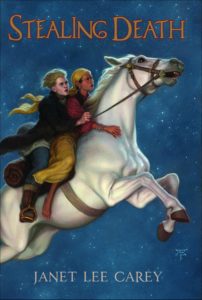I’ll admit I’m a bit late to the party on this one. The first Artemis Fowl book was published in 2001, when I was a bit older than the series’s target demographic, so it got past me until just now. But I’m still #12 on the library waitlist for Game of Thrones, so I thought I’d give it a try. And after reading it, I want to know why these books were marketed only to kids. The subtext here is brilliant.
Artemis Fowl is a millionaire, a criminal mastermind, and twelve years old. His dad has conveniently gone missing after an explosion on a Russian cargo ship and his mother has shut herself up in her room out of grief, so he can run around and do his moneymaking schemes without too much trouble. His accomplices are Butler and his sister Juliet, the butler and maid of the Fowl estate. And… and… the awesomeness of these characters… you simply have to read about them for yourself:
The Butlers had been serving the Fowls for centuries. It had always been that way. Indeed, there were several linguists of the opinion that this was how the common noun had originated. The first record of this unusual arrangement was when Virgil Butler had been contracted as servant, bodyguard, and cook to Lord Hugo de Folé for one of the first great Norman crusades.
At the age of ten, Butler children were sent to a private training center in Israel, where they were taught the specialized skills needed to guard the latest in the Fowl line. These skills included Cordon Bleu cooking, marksmanship, a customized blend of martial arts, emergency medicine, and information technology. If, at the end of their training, there was not a Fowl to guard, then the Butlers were eagerly snapped up as bodyguards for various royal personages, generally in Monaco or Saudi Arabia.
The whole book reads like this.
Artemis’s latest scheme is to kidnap an officer of LEPrecon, the fairy police, and hold her ransom for quite a lot of money. Of course, the situation devolves into a standoff in which Colfer has the chance to trot out heist movie tropes and play with them. There’s a fairy sergeant with a cigar in his mouth, a dwarven convict who’s sent to work in a plea-bargaining deal, and the smartass techie who walks the fairies through Fowl Manor via his headset. He’s a centaur. He loves carrots.
There are, unfortunately, parts of the book that induce giggles for the wrong reasons. Artemis has at his disposal the most cutting-edge of 2001 technology. Near the beginning of the book, he steals some data from a fairy in Saigon and then e-mails it to himself. One can only assume he was using a Hotmail account.
But seriously, just read it for the Butlers. Go read it.




